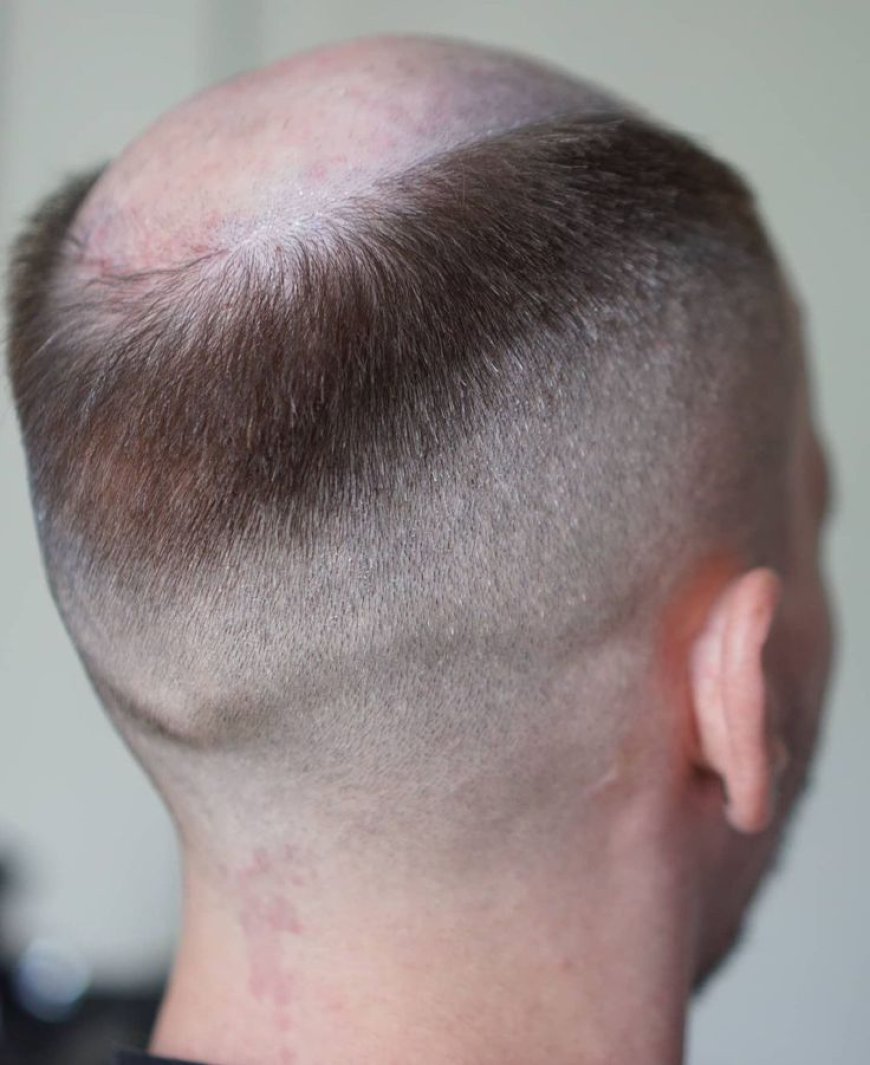Finasteride for Hair Loss: Is It Right for You?
Finasteride for Hair Loss in Dubai is a prescription medication primarily used to treat hair loss in men. It functions by inhibiting the enzyme 5-alpha-reductase, which converts testosterone into dihydrotestosterone (DHT). DHT is a hormone that plays a pivotal role in hair loss, particularly in genetically predisposed individuals. By reducing DHT levels, Finasteride can help slow down hair loss and promote regrowth in some users.

Hair loss can be a distressing experience, affecting self-esteem and overall confidence. For those struggling with androgenetic alopecia (commonly known as male or female pattern baldness), finding effective solutions is crucial. Among various treatments available, Finasteride for hair loss has gained significant attention. This article explores what Finasteride is, how it works, its benefits, and whether it might be the right choice for you.
Understanding Finasteride
Finasteride for Hair Loss in Dubai is a prescription medication primarily used to treat hair loss in men. It functions by inhibiting the enzyme 5-alpha-reductase, which converts testosterone into dihydrotestosterone (DHT). DHT is a hormone that plays a pivotal role in hair loss, particularly in genetically predisposed individuals. By reducing DHT levels, Finasteride can help slow down hair loss and promote regrowth in some users.
How Effective is Finasteride for Hair Loss?
Clinical studies have shown that Finasteride can significantly improve hair growth and reduce hair loss in men. In fact, about 90% of users experience stabilization of hair loss after one year of treatment, while around 66% see noticeable hair regrowth. The effectiveness of Finasteride varies from person to person, influenced by factors such as age, genetics, and the severity of hair loss at the start of treatment.
While results can be impressive, it’s essential to remember that Finasteride does not work for everyone. Some users may experience minimal benefits or no change at all. Therefore, it’s advisable to consult a healthcare professional to determine if this treatment aligns with your specific needs.
Benefits of Using Finasteride
-
Proven Results: Finasteride has been extensively researched and is clinically proven to be effective in treating hair loss. Many users report positive outcomes, making it one of the most trusted medications in the industry.
-
Convenience: Finasteride is available in pill form, making it easy to incorporate into a daily routine. Users typically take one tablet daily, which is manageable and straightforward.
-
Long-term Effects: Regular use of Finasteride can provide long-lasting results. While some users may notice hair loss returning after discontinuation, many maintain their gains for years with consistent treatment.
-
Low Side Effects: While every medication has potential side effects, Finasteride is generally well-tolerated. The most commonly reported side effects include decreased libido, erectile dysfunction, and breast tenderness. However, these effects are relatively rare and often resolve after discontinuation of the medication.
-
Versatile Use: Finasteride is suitable for adult men, and in some cases, it is prescribed to women experiencing hair loss, particularly post-menopausal women. This versatility allows it to address a broader demographic.
Potential Side Effects
While Finasteride is considered safe for most users, potential side effects do exist. As mentioned, some men may experience sexual side effects, which can be distressing. It’s essential to discuss these risks with a healthcare provider, who can help weigh the benefits against potential downsides.
In rare cases, long-term users may develop breast lumps or experience breast enlargement. If any unusual symptoms occur, it’s crucial to seek medical advice promptly.
Is Finasteride Right for You?
Deciding whether Finasteride is the right treatment for your hair loss involves several considerations:
-
Consultation with a Healthcare Professional: It’s vital to have an initial consultation with a qualified healthcare provider or dermatologist. They can assess your hair loss condition, review your medical history, and determine if Finasteride is suitable for you.
-
Understanding Your Expectations: Have realistic expectations regarding the treatment. While many users see positive results, it is not a miracle cure. Discuss your goals and desired outcomes with your healthcare provider to ensure you’re on the same page.
-
Evaluating Your Medical History: Certain medical conditions or medications may interact negatively with Finasteride. Ensure you disclose your complete medical history to your doctor to avoid complications.
-
Considering Other Treatment Options: Finasteride is not the only option available. Other treatments, such as minoxidil, hair transplant surgery, or laser therapy, may be worth exploring. Your healthcare provider can help you create a comprehensive treatment plan tailored to your needs.
-
Monitoring Progress: If you start taking Finasteride, be prepared for regular follow-ups with your healthcare provider. Monitoring progress will help you determine whether the treatment is effective and whether adjustments are necessary.
Conclusion
Finasteride for hair loss has proven to be an effective option for many men struggling with pattern baldness. With its ability to inhibit DHT production, it addresses one of the primary causes of hair loss, providing users with a chance to regain confidence and improve their appearance. However, it’s essential to approach treatment with realistic expectations and a thorough understanding of potential side effects.
Ultimately, the decision to use Finasteride should be made collaboratively with a healthcare professional who can guide you through the process, assess your specific needs, and help determine if this medication is the right fit for your hair restoration journey. Remember, regaining your hair may take time, and consistent treatment is key to achieving the best possible results.

 laiba5656
laiba5656